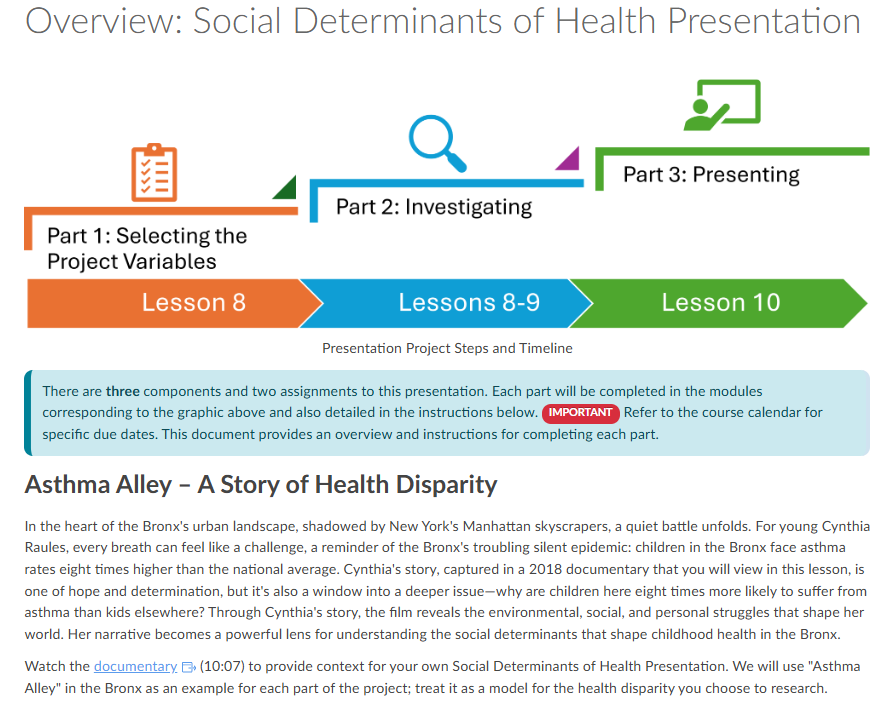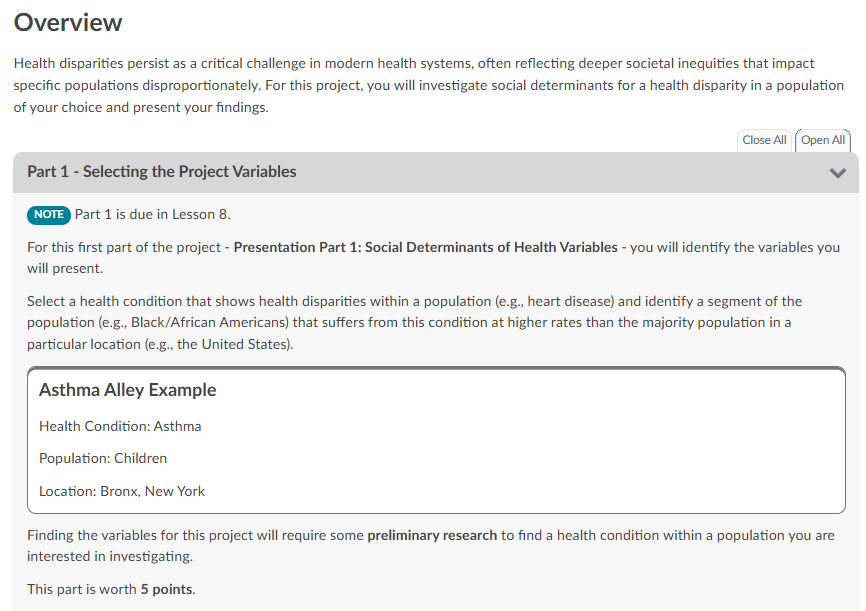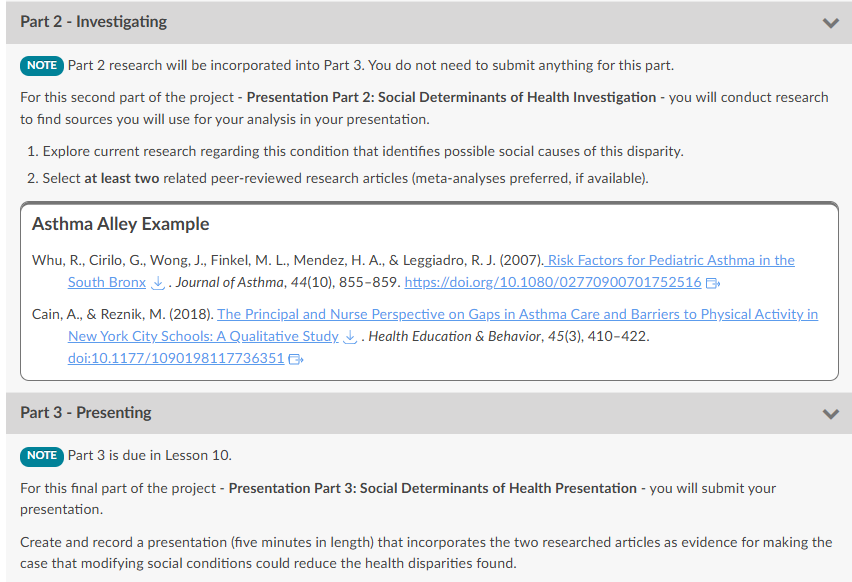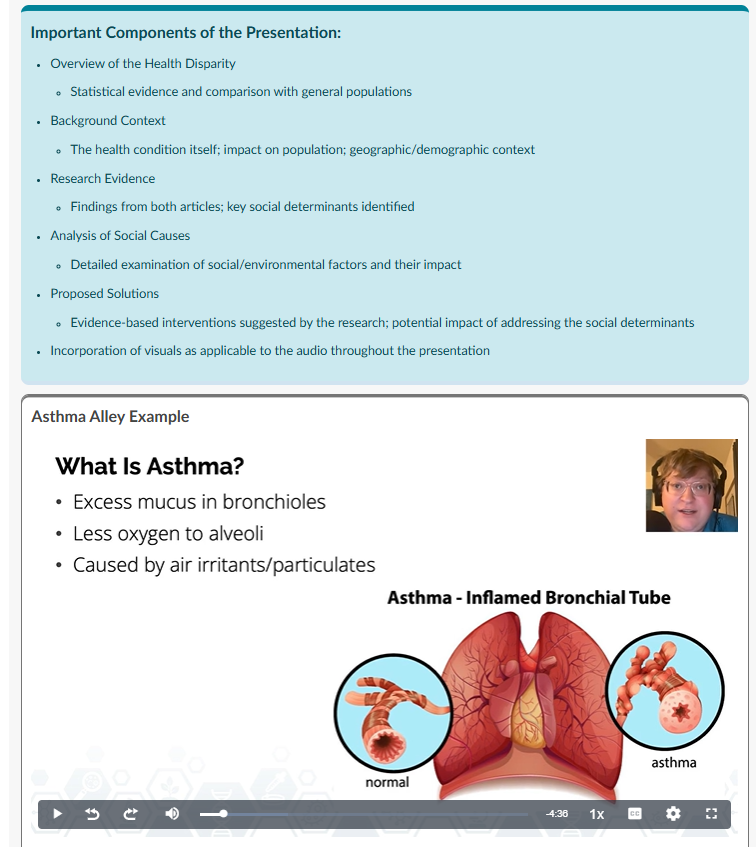Using Storytelling to Support Research on Health Disparities
Overview
Students use a compelling real-world story as the model for a multi-lesson project that explores health disparities and potential solutions.
Why Use This?
Storytelling helps students connect with course material on a deeper level. Research shows that stories boost memory, improve understanding, and activate more areas of the brain than facts alone. Starting with a powerful story engages students right away and helps them make meaningful connections as they work through each stage of a project.
How Does It Work?
Students are introduced to the assignment by watching the documentary Asthma Alley, which highlights the high rates of childhood asthma in the Bronx, New York. Using this story as a model, students select a health condition that shows measurable disparities in a population in a specific location.
Students then research the condition, investigate social and environmental causes of the disparities using scholarly sources, and propose potential solutions. In the final step, they present their findings and recommendations to the class, using an example presentation on the Asthma Alley story as a reference.

Overview: Social Determinants of Health Presentation
Part 1: Selecting the Project Variables
Lesson 8
Part 2: Investigating
Lessons 8–9
Part 3: Presenting
Lesson 10
Presentation Project Steps and Timeline
There are three components and two assignments to this presentation. Each part will be completed in the modules corresponding to the graphic above and also detailed in the instructions below. IMPORTANT Refer to the course calendar for specific due dates. This document provides an overview and instructions for completing each part.
Asthma Alley – A Story of Health Disparity
In the heart of the Bronx’s urban landscape, shadowed by New York’s Manhattan skyscrapers, a quiet battle unfolds. For young Cynthia Raules, every breath can feel like a challenge, a reminder of the Bronx’s troubling silent epidemic: children in the Bronx face asthma rates eight times higher than the national average. Cynthia’s story, captured in a 2018 documentary that you will view in this lesson, is one of hope and determination, but it’s also a window into a deeper issue—why are children here eight times more likely to suffer from asthma than kids elsewhere? Through Cynthia’s story, the film reveals the environmental, social, and personal struggles that shape her world. Her narrative becomes a powerful lens for understanding the social determinants that shape childhood health in the Bronx.
Watch the documentary (10:07) to provide context for your own Social Determinants of Health Presentation. We will use “Asthma Alley” in the Bronx as an example for each part of the project; treat it as a model for the health disparity you choose to research.



Keep In Mind
- Creating a fictional story or case study can take time. Consider using AI to generate story ideas on a topic.
- Emphasize the importance of using scholarly research to support proposed solutions.
- Consider incorporating additional video that covers the instructions for the project.
- Use any story—fictional, real, or personal—to introduce students to a project. The story can be delivered in any medium as well, not just film.
- Aim to engage students both intellectually and emotionally. Look for digital storytelling examples, TED Talks, or personal stories to inspire a narrative of your own.